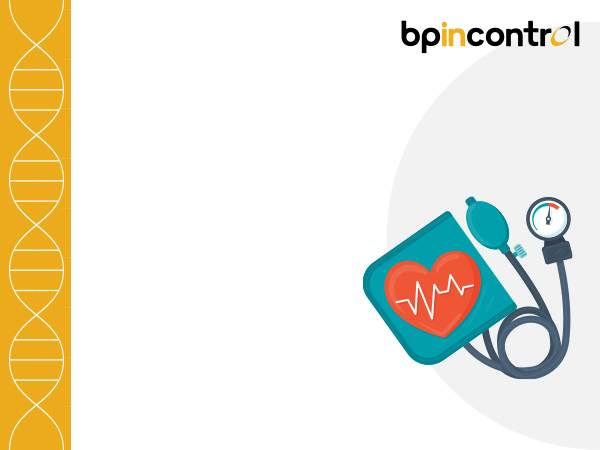Orthostatic Hypotension: Symptoms, Causes & Treatment

Table of Contents
What is Orthostatic Hypotension?
Orthostatic hypotension meaning can be defined as a medical condition in which a person’s blood pressure suddenly drops when they move from sitting or lying down to standing up. Sometimes this condition is also referred to as postural hypotension. This reduction in blood pressure can cause fainting, dizziness, and lightheadedness.
In this article, we will discuss everything about orthostatic hypotension, from its causes, signs, symptoms, and diagnosis to available treatments and recovery.
What BP is Orthostatic Hypotension?
Commonly speaking, a considerable drop in blood pressure is referred to as orthostatic hypotension. The criteria can change, but a typical definition is a fall in blood pressure of 20 mm Hg or more in the systolic or 10 mm Hg in the diastolic within three minutes of standing.
In contrast to orthostatic hypotension, which is characterised by a drop in blood pressure upon standing, orthostatic hypertension is characterised by an increase in blood pressure. The diagnostic criteria for orthostatic hypertension can differ, but it often requires an increase in systolic blood pressure of 20 mm Hg or higher within the first couple of minutes of standing.
Who might get Postural Hypotension?
While orthostatic hypotension, also called postural hypotension can affect people of all ages, it is more common among the elderly. Certain medical problems and drugs can raise your chances of getting this illness. Along with them, individuals with Parkinson’s disease, diabetes, heart issues, and those using blood pressure drugs are at a higher risk of getting postural hypotension.
Symptoms of Orthostatic Hypotension
The symptoms of orthostatic hypotension can vary from person to person in severity but often include:
- Dizziness: This is one of the most common symptoms of orthostatic hypotension. When you stand up, blood pools in your legs momentarily, causing a decrease in blood pressure in the upper body. This can lead to a feeling of lightheadedness or dizziness.
- Blurry Vision: Reduced blood flow to the eyes can cause visual disturbances, such as blurry vision or tunnel vision, making it challenging to see clearly when standing.
- Nausea: Some individuals with orthostatic hypotension may experience nausea, and in more severe cases, vomiting, as the drop in blood pressure can affect the gastrointestinal system.
- Weakness: Orthostatic hypotension sometimes results in a feeling of weakness or fatigue, especially in the legs, making it difficult to stand or walk comfortably.
- Fainting: In severe cases of orthostatic hypotension, a person may lose consciousness due to a sudden and significant drop in blood pressure upon standing. This can be dangerous, especially if it leads to falls and injuries.
- Confusion: Reduced blood flow to the brain can also lead to cognitive changes, such as confusion or difficulty concentrating. It can also include headaches, palpitations, and sweating, this is because the brain doesn’t receive enough oxygen and nutrients in the upright position.
Causes of Orthostatic hypotension
There are several potential causes of orthostatic hypotension, the list includes:
- Dehydration: One of the most common causes of orthostatic hypotension is dehydration. Inadequate fluid intake can lead to a decrease in blood volume, making it harder for the circulatory system to maintain blood pressure when standing.
- Medications: Certain medications can contribute to low blood pressure when standing. This includes antihypertensives (drugs used to treat high blood pressure), diuretics (which can lead to fluid loss), and some antidepressants.
- Nervous System Disorders: Conditions that affect the autonomic nervous system, responsible for regulating involuntary bodily functions like blood pressure, can disrupt blood pressure control, leading to orthostatic hypotension. These disorders include Parkinson’s disease, multiple system atrophy, and autonomic neuropathy.
- Prolonged Bed Rest: Being immobile for extended periods, such as during hospitalisation or bed rest, can lead to reduced muscle tone and a diminished ability of the body to regulate blood pressure upon standing. This is often observed in elderly individuals or those with mobility issues.
- Age: Older adults are more prone to orthostatic hypotension due to age-related changes in blood vessel elasticity and autonomic nervous system function.
- Anaemia: Anaemia, characterised by a deficiency in red blood cells, can impair the blood’s ability to carry oxygen to tissues. This can lead to reduced blood pressure, especially when getting up into a standing position.
Treatment for Orthostatic Hypotension
The treatment plan for orthostatic hypotension includes:
- Hydration: Adequate fluid intake is crucial to maintain blood volume and prevent dehydration, which is one of the most common causes of orthostatic hypotension.
- Medication Adjustment: If your medications are contributing to orthostatic hypotension, your doctor can adjust the dosages, switch to alternative medications, or modify the timing of medication administration to minimise blood pressure fluctuations.
- Compression Garments: Wearing compression stockings or abdominal binders can help improve blood flow to the upper body by preventing blood pooling in the legs. These garments assist in maintaining blood pressure when standing.
- Lifestyle Changes: Simple lifestyle modifications can also make a big difference. These include rising slowly from a seated or lying position, sitting on the edge of the bed for a few moments before standing, and performing leg exercises to improve muscle tone, which aids in blood flow regulation.
- Physical Therapy: Some individuals with orthostatic hypotension benefit from physical therapy programs designed to improve cardiovascular fitness, muscle strength, and balance, ultimately helping to manage symptoms.
- Dietary Changes: Increasing dietary salt intake, under the guidance of your doctor or a healthcare professional, can sometimes also help raise blood pressure. However, this approach is not suitable for everyone and should be approved by the doctor after examining the individual needs of the patient.
Along with these treatments, regular blood pressure monitoring can also help you in managing orthostatic hypotension. This monitoring helps track changes in blood pressure during position changes (lying to sitting to standing) and assess the effectiveness of treatment interventions.
In some cases, your doctor can also recommend an electrocardiogram (ECG or EKG) to assess the electrical activity of the heart. An ECG can help identify any underlying cardiac issues that might be contributing to your orthostatic hypotension. Detecting abnormal heart rhythms or other cardiac abnormalities is crucial for appropriate treatment planning.
So, if you are wondering how to manage orthostatic hypotension, we recommend visiting Bp in Control’s website where you find a doctor near you through their Find a Physician page.
What are you waiting for? Take the first step towards a healthier, symptom-free life now!
FAQs
1. What does orthostatic BP mean?
Blood pressure measurements recorded in multiple body postures, commonly lying down, sitting, and standing, are referred to as orthostatic blood pressure. It helps in the diagnosis of orthostatic hypotension by measuring blood pressure fluctuations when changing postures.
2. Is orthostatic hypotension good or bad?
Orthostatic hypotension is generally seen as undesirable since it can cause symptoms such as dizziness and fainting, hence increasing the risk of falls and injury.
3. How is orthostatic BP measured?
Orthostatic blood pressure is determined by taking blood pressure readings in several positions (sleeping, sitting, and standing) and comparing them. A large drop in blood pressure when standing suggests orthostatic hypotension.
4. How is orthostatic hypotension diagnosed?
A medical history, physical examination, and blood pressure measures in various positions are frequently used to make a diagnosis. Additional tests, including tilt table testing or echocardiograms, can be required in some circumstances to determine the underlying issue.
5. Can stress cause orthostatic hypotension?
Stress alone cannot directly cause orthostatic hypotension, but it can exacerbate the condition in individuals already prone to it. Stress can affect blood pressure regulation, potentially worsening the symptoms of orthostatic hypotension.
Disclaimer
The information contained in this article is to educate, spread awareness in relation to hypertension and other diseases to the public at large. The contents of this article are created and developed by BPinControl.in through its authors, which has necessary, authorisations, license, approvals, permits etc to allow usage of this articles on The Website. The views and opinions expressed in this article are views, opinions of the respective authors and are independently endorsed by doctors. Although great care has been taken in compiling and checking the information in this article, The Website shall not be responsible, or in any way liable for any errors, omissions or inaccuracies in this article whether arising from negligence or otherwise, or for any consequences arising therefrom. The content of this article is not a substitute for any medical advice. The Website shall not be held responsible or liable for any consequence arising out of reliance on the information provided in the article.


Comments (0)
No comments found.Add your comment